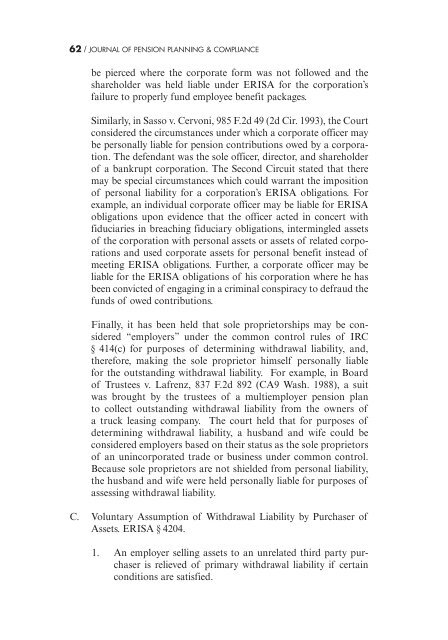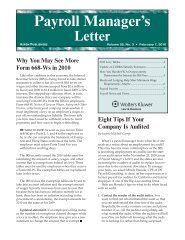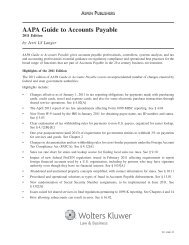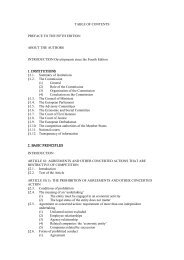journal of pension planning & compliance - Kluwer Law International
journal of pension planning & compliance - Kluwer Law International
journal of pension planning & compliance - Kluwer Law International
Create successful ePaper yourself
Turn your PDF publications into a flip-book with our unique Google optimized e-Paper software.
62 / JOURNAL OF PENSION PLANNING & COMPLIANCE<br />
be pierced where the corporate form was not followed and the<br />
shareholder was held liable under ERISA for the corporation’s<br />
failure to properly fund employee benefit packages.<br />
Similarly, in Sasso v. Cervoni, 985 F.2d 49 (2d Cir. 1993), the Court<br />
considered the circumstances under which a corporate <strong>of</strong>ficer may<br />
be personally liable for <strong>pension</strong> contributions owed by a corporation.<br />
The defendant was the sole <strong>of</strong>ficer, director, and shareholder<br />
<strong>of</strong> a bankrupt corporation. The Second Circuit stated that there<br />
may be special circumstances which could warrant the imposition<br />
<strong>of</strong> personal liability for a corporation’s ERISA obligations. For<br />
example, an individual corporate <strong>of</strong>ficer may be liable for ERISA<br />
obligations upon evidence that the <strong>of</strong>ficer acted in concert with<br />
fiduciaries in breaching fiduciary obligations, intermingled assets<br />
<strong>of</strong> the corporation with personal assets or assets <strong>of</strong> related corporations<br />
and used corporate assets for personal benefit instead <strong>of</strong><br />
meeting ERISA obligations. Further, a corporate <strong>of</strong>ficer may be<br />
liable for the ERISA obligations <strong>of</strong> his corporation where he has<br />
been convicted <strong>of</strong> engaging in a criminal conspiracy to defraud the<br />
funds <strong>of</strong> owed contributions.<br />
Finally, it has been held that sole proprietorships may be considered<br />
“employers” under the common control rules <strong>of</strong> IRC<br />
§ 414(c) for purposes <strong>of</strong> determining withdrawal liability, and,<br />
therefore, making the sole proprietor himself personally liable<br />
for the outstanding withdrawal liability. For example, in Board<br />
<strong>of</strong> Trustees v. Lafrenz, 837 F.2d 892 (CA9 Wash. 1988), a suit<br />
was brought by the trustees <strong>of</strong> a multiemployer <strong>pension</strong> plan<br />
to collect outstanding withdrawal liability from the owners <strong>of</strong><br />
a truck leasing company. The court held that for purposes <strong>of</strong><br />
determining withdrawal liability, a husband and wife could be<br />
considered employers based on their status as the sole proprietors<br />
<strong>of</strong> an unincorporated trade or business under common control.<br />
Because sole proprietors are not shielded from personal liability,<br />
the husband and wife were held personally liable for purposes <strong>of</strong><br />
assessing withdrawal liability.<br />
C. Voluntary Assumption <strong>of</strong> Withdrawal Liability by Purchaser <strong>of</strong><br />
Assets. ERISA § 4204.<br />
1. An employer selling assets to an unrelated third party purchaser<br />
is relieved <strong>of</strong> primary withdrawal liability if certain<br />
conditions are satisfied.






